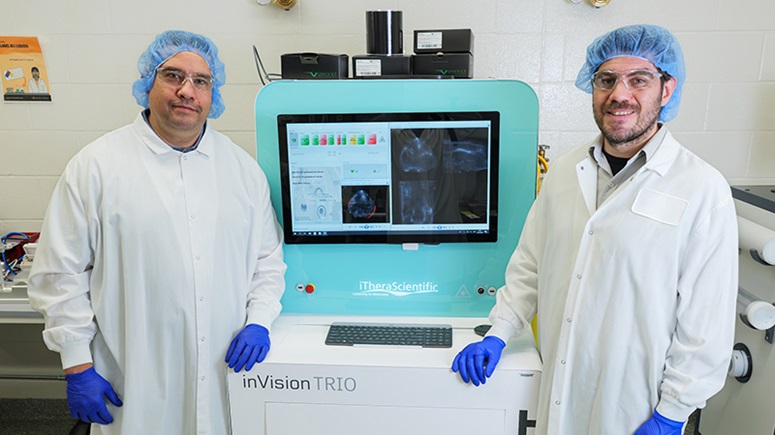New Imaging Technique Monitors Inflammation Disorders without Radiation Exposure
Posted on 02 May 2024
Imaging inflammation using traditional radiological techniques presents significant challenges, including radiation exposure, poor image quality, high costs, and invasive procedures. Now, new contrast agents and imaging technology are being developed to improve the monitoring of inflammatory disorders like inflammatory bowel disease, arthritis, hepatitis, and other autoimmune diseases.
A team of researchers at the University of Missouri (Columbia, MO, USA) is developing new methods to track the progression of inflammatory disorders using cutting-edge imaging technologies. They are developing the first probiotic bacterial-based contrast agent suitable for use with multispectral optoacoustic tomography (MSOT). This novel contrast agent incorporates lactic acid bacteria that produce a distinctive glowing blue color in MSOT imaging. MSOT itself is a non-radiative imaging technology that offers high-resolution images of biological tissues using light and sound, similar to an ultrasound procedure. This advancement marks a significant leap in creating bacterial-based, optoacoustic detectable contrast agents for the diagnosis and management of inflammation.

“Because this non-invasive technique does not require exposure to radiation it is possible to more regularly obtain imaging from patients to monitor disease progression and response to therapy,” said Jorge Gomez-Gutierrez, PhD, an associate professor of pediatrics at the University of Missouri School of Medicine who is leading the research team. “Unlike the synthetic contrast agents currently available, the natural agent we are developing is less expensive to produce and doesn’t offer the downsides of the synthetic agents, which can aggravate a patient’s IBD or colitis.”
Related Links:
University of Missouri






 Guided Devices.jpg)







